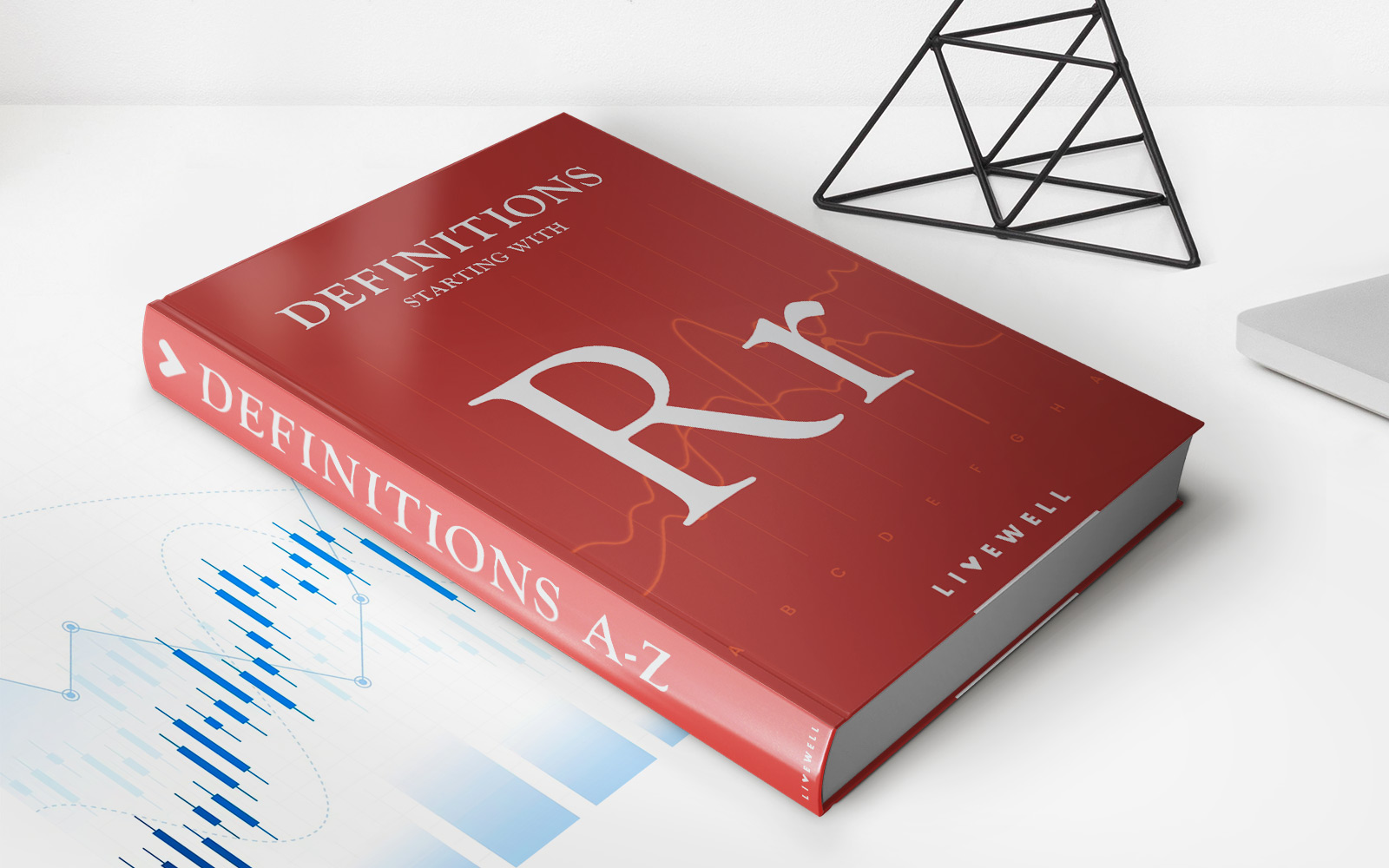Home>Finance>What Is A Contingent Beneficiary In Life Insurance?


Finance
What Is A Contingent Beneficiary In Life Insurance?
Published: November 5, 2023
Learn about contingent beneficiaries in life insurance and how they can impact your financial future. Understand the importance of having a solid financial plan in place.
(Many of the links in this article redirect to a specific reviewed product. Your purchase of these products through affiliate links helps to generate commission for LiveWell, at no extra cost. Learn more)
Table of Contents
- Introduction
- Definition of a Contingent Beneficiary
- Purpose and Role of a Contingent Beneficiary
- Designating a Contingent Beneficiary
- Types of Contingent Beneficiaries
- Rights and Responsibilities of a Contingent Beneficiary
- Contingent Beneficiary vs. Primary Beneficiary
- Handling Changes and Updates to Contingent Beneficiaries
- Common Mistakes to Avoid with Contingent Beneficiaries
- Conclusion
Introduction
Life insurance is a crucial financial tool that provides a financial safety net for your loved ones in the event of your death. When you purchase a life insurance policy, you need to name a beneficiary who will receive the death benefit upon your passing. While primary beneficiaries are the first in line to receive the proceeds, it’s important to plan for any contingencies that may arise.
This is where the contingent beneficiary comes into play. A contingent beneficiary is the individual or entity designated to receive the death benefit if the primary beneficiary is unable to do so. This secondary designation ensures that your wishes are still carried out, even if unforeseen circumstances prevent your primary beneficiary from receiving the funds.
Designating a contingent beneficiary in your life insurance policy is a thoughtful and prudent way to ensure that your loved ones are taken care of. It provides an extra layer of protection and allows for flexibility in your estate planning. Understanding the purpose and role of a contingent beneficiary is essential to make informed decisions when setting up your life insurance policy.
In this article, we will delve into the definition, purpose, types, and responsibilities of a contingent beneficiary. We will also compare the role of a contingent beneficiary to that of a primary beneficiary and discuss how to handle changes or updates to contingent beneficiaries. Lastly, we will highlight common mistakes to avoid when dealing with contingent beneficiaries.
Definition of a Contingent Beneficiary
A contingent beneficiary, in the context of life insurance, is the individual or entity named to receive the death benefit if the primary beneficiary is unable to do so. The contingent beneficiary only becomes entitled to the proceeds if the primary beneficiary passes away or is otherwise unable to receive the funds.
Think of the contingent beneficiary as a backup plan. While the primary beneficiary is typically the individual you want to directly benefit from the life insurance policy, naming a contingent beneficiary ensures that the funds will still go to someone you trust if the primary beneficiary is unable to fulfill their role.
Contingent beneficiaries can be specifically named individuals, such as your spouse, children, or siblings. Alternatively, you can designate a contingent beneficiary as a charitable organization, a trust, or any other entity. It’s important to clearly specify the contingent beneficiary in your life insurance policy to avoid any confusion or disputes in the future.
It’s worth noting that contingent beneficiaries do not have any claim to the death benefit while the primary beneficiary is alive and capable of receiving the funds. The contingent beneficiary’s right to the proceeds is contingent upon the primary beneficiary’s inability to accept them.
It’s crucial to understand that the contingent beneficiary designation only takes effect if the primary beneficiary predeceases you or is otherwise unable to receive the death benefit. If the primary beneficiary is alive and able to accept the funds, the contingent beneficiary has no claim to the proceeds. Therefore, it’s advisable to review and update your beneficiary designations periodically to ensure they align with your current wishes and circumstances.
Purpose and Role of a Contingent Beneficiary
The purpose of designating a contingent beneficiary in your life insurance policy is to ensure that your death benefit proceeds are distributed according to your wishes, even if the primary beneficiary is unable to receive them. Life is unpredictable, and circumstances can change over time, making the role of a contingent beneficiary invaluable in providing a backup plan.
The role of a contingent beneficiary becomes particularly important in situations where the primary beneficiary predeceases you, declines the benefit, or is not able to be located. Without a contingent beneficiary, the insurance company may need to follow the default guidelines for distributing the death benefit, which might not align with your intended wishes.
The contingent beneficiary acts as a contingency plan, ensuring that the funds are directed to an individual or entity of your choosing. This could be another family member, a close friend, a charity, or even a trust. By naming a contingent beneficiary, you have control over who ultimately receives the death benefit and can tailor it to align with your estate planning goals.
In addition to providing a backup plan, a contingent beneficiary also plays a crucial role in reducing the potential for conflicts or disputes among your loved ones. In the absence of a contingent beneficiary, disagreements can arise among family members or other potential beneficiaries, leading to legal battles and unnecessary stress during an already challenging time.
By clearly designating a contingent beneficiary, you minimize uncertainty and ensure a smooth and efficient distribution of the death benefit. This not only brings peace of mind for you but also helps your loved ones navigate the financial implications of your passing with ease.
It’s important to review your contingent beneficiary designation periodically to ensure its accuracy and relevance. Life circumstances change, and you may experience significant life events, such as marriage, divorce, or the birth of a child, that warrant updates to your beneficiary designations.
Consulting with a qualified estate planning attorney or financial advisor can provide valuable guidance in determining the most appropriate contingent beneficiary and ensuring your life insurance policy aligns with your overall estate plan.
Designating a Contingent Beneficiary
Designating a contingent beneficiary in your life insurance policy is a straightforward process that involves clearly identifying and naming the individual or entity you wish to receive the death benefit if the primary beneficiary is unable to do so.
To designate a contingent beneficiary, you will typically need to complete a beneficiary designation form provided by your life insurance company. This form allows you to specify both the primary beneficiary and the contingent beneficiary. Some insurance companies may also provide an option to designate multiple contingent beneficiaries and specify the percentage of the death benefit each one would receive.
When designating a contingent beneficiary, it’s important to provide accurate and up-to-date information, including their legal name, relationship to you (if an individual), and contact details. This ensures that the insurance company can easily locate and communicate with the contingent beneficiary if needed.
Additionally, it’s crucial to clearly state in your designation whether the contingent beneficiary should be entitled to the death benefit if the primary beneficiary is unable to accept it or if they should only receive the proceeds in the event of both your and the primary beneficiary’s passing.
It’s worth noting that some life insurance policies may automatically include a default contingent beneficiary provision. This means that if you do not explicitly designate a contingent beneficiary, the insurance policy will specify a default choice, such as your spouse or your estate. However, it’s always recommended to clearly state your contingent beneficiary designation to ensure that your specific wishes are followed.
After completing the beneficiary designation form, it’s important to keep a copy for your records and provide a copy to your insurance company. It’s also wise to inform your contingent beneficiary of their designation and keep them informed of any changes or updates to your policy.
Remember that life circumstances can change, and it’s crucial to review and update your beneficiary designations periodically. This ensures that your contingent beneficiary reflects your current intentions and aligns with your overall estate plan.
Consulting with a qualified estate planning attorney or financial advisor can provide valuable guidance in the process of designating a contingent beneficiary and ensuring that your life insurance policy is tailored to your specific needs and desires.
Types of Contingent Beneficiaries
When designating a contingent beneficiary in your life insurance policy, you have several options to consider. The type of contingent beneficiary you choose will depend on your specific circumstances and goals. Here are some common types of contingent beneficiaries:
- Individuals: You can name specific individuals, such as your spouse, children, siblings, or other family members, as contingent beneficiaries. This allows you to directly provide for your loved ones if the primary beneficiary is unable to receive the death benefit.
- Charitable Organizations: If you have philanthropic intentions, you can designate a charitable organization as your contingent beneficiary. This allows you to support a cause or organization that holds significant meaning to you, even if the primary beneficiary is unable to receive the funds.
- Trusts: Creating a trust and naming it as the contingent beneficiary can provide added control and flexibility in the distribution of the death benefit. With a trust, you can specify how and when the funds should be disbursed to the beneficiaries, ensuring that it aligns with your estate planning goals.
- Estate: If you do not have a specific individual or entity in mind as a contingent beneficiary, you can designate your estate as the recipient of the death benefit. However, it’s important to note that if the death benefit passes through your estate, it may be subject to probate and potentially vulnerable to creditors or taxation.
- Per Stirpes: This type of contingent beneficiary designation allows you to include potential future generations in the distribution of the death benefit. With a per stirpes designation, if the primary beneficiary is unable to receive the funds, they would pass to their children or grandchildren, dividing equally among them.
It’s important to carefully consider your options and choose the type of contingent beneficiary that best aligns with your goals and intentions. Keep in mind that estate planning and beneficiary designations can be complex, so consulting with an experienced attorney or financial advisor can provide valuable guidance in determining the most appropriate contingent beneficiary for your situation.
Rights and Responsibilities of a Contingent Beneficiary
As a contingent beneficiary in a life insurance policy, you have specific rights and responsibilities. While the primary beneficiary has the first claim to the death benefit, as a contingent beneficiary, your entitlement to the proceeds is contingent upon certain circumstances. Here are the key rights and responsibilities you should be aware of:
1. Right to Receive the Death Benefit: If the primary beneficiary is unable to accept the death benefit, either due to their passing or ineligibility, you have the right to receive the funds. Your designation as the contingent beneficiary ensures that you are next in line to receive the proceeds and that your financial needs or wishes are considered.
2. Responsibility to Provide Proof of Eligibility: As a contingent beneficiary, you may be required to provide documentation or proof to the insurance company to establish your eligibility to receive the death benefit. This may include submitting a death certificate of the primary beneficiary or other relevant information.
3. Communication and Cooperation: It is your responsibility to stay informed and communicate with the insurance company regarding your status as the contingent beneficiary. You should promptly notify the insurer if you become aware of any changes in circumstances that may affect your eligibility or entitlement to the death benefit.
4. Acting in the Best Interest of the Primary Beneficiary: While the primary beneficiary is alive and able to receive the death benefit, it is your duty as a contingent beneficiary to respect their rights and wishes. This includes refraining from taking any actions that could jeopardize their entitlement to the proceeds or cause unnecessary conflicts.
5. Estate Planning Considerations: As a contingent beneficiary, you may have your own estate planning considerations to address. If you receive the death benefit, you should consult with a qualified professional to understand the potential tax implications and consider how it may affect your overall financial plan.
6. Review and Update Beneficiary Designations: It is essential to review your beneficiary designations periodically and make updates as needed. Life circumstances change, and you may experience significant events, such as marriage, divorce, or the birth of a child, which warrant revisiting your contingent beneficiary designation.
Understanding your rights and responsibilities as a contingent beneficiary ensures that you are well-prepared and can navigate the process smoothly. If you have any questions or concerns, it’s advisable to seek guidance from a qualified estate planning attorney or financial advisor who can provide personalized advice based on your unique situation.
Contingent Beneficiary vs. Primary Beneficiary
In a life insurance policy, both the primary beneficiary and the contingent beneficiary play crucial roles in determining who will receive the death benefit. Understanding the differences between these designations is essential for effective estate planning. Here’s a breakdown of the key distinctions between a contingent beneficiary and a primary beneficiary:
Primary Beneficiary: The primary beneficiary is the person or entity named to receive the death benefit of the life insurance policy. They have the first claim to the proceeds, should the insured individual pass away. The primary beneficiary can be a spouse, child, family member, friend, or even a charitable organization. Designating a primary beneficiary ensures that the insurance company knows who should receive the funds upon the insured individual’s death.
Contingent Beneficiary: A contingent beneficiary is the person or entity designated to receive the death benefit if the primary beneficiary is unable to do so. The contingent beneficiary only becomes entitled to the proceeds if the primary beneficiary is deceased, declines the benefit, or cannot be located. The contingent beneficiary provides a backup plan, ensuring that the death benefit is distributed according to the insured individual’s wishes, even if unforeseen circumstances prevent the primary beneficiary from receiving it.
The primary beneficiary has the first right to the death benefit, while the contingent beneficiary is next in line. If the primary beneficiary is unable to accept the proceeds, they will pass on to the contingent beneficiary. However, if the primary beneficiary is alive and entitled to the funds, the contingent beneficiary has no claim to the death benefit.
It’s important to note that you can designate multiple primary beneficiaries and contingent beneficiaries in your life insurance policy. You can specify the percentage or share of the death benefit each beneficiary should receive. This allows you to distribute the proceeds according to your wishes and the financial needs of your loved ones.
When considering primary and contingent beneficiaries, it’s crucial to review and update your designations periodically. Life circumstances change, relationships evolve, and unexpected events may occur. Regularly assessing your beneficiary designations ensures that they align with your current goals, intentions, and family dynamics.
Working with a qualified estate planning attorney or financial advisor can provide valuable guidance in understanding the differences between primary and contingent beneficiaries. They can help you make informed decisions and tailor your beneficiary designations to ensure your loved ones are taken care of according to your wishes.
Handling Changes and Updates to Contingent Beneficiaries
Life is constantly evolving, and it’s important to review and update your beneficiary designations, including contingent beneficiaries, as needed. Whether there is a change in your family structure, relationships, or personal preferences, keeping your life insurance policy beneficiary designations up to date ensures that your wishes are accurately reflected. Here’s how to handle changes and updates to contingent beneficiaries:
1. Review your policy regularly: It’s advisable to review your life insurance policy and beneficiary designations at least once a year or whenever there are significant life events such as marriage, birth of a child, divorce, or the death of a beneficiary. This allows you to ensure that your contingent beneficiary designation aligns with your current intentions and circumstances.
2. Obtain and complete the necessary forms: Contact your life insurance company or check their website to obtain the appropriate forms for changing or updating your beneficiary designations. This may include a new beneficiary designation form or a change of beneficiary form. Carefully read and follow the instructions provided.
3. Determine the new contingent beneficiary: Consider who you would like to designate as the new contingent beneficiary. This may involve a spouse, children, siblings, other family members, a trust, a charity, or any other entity. Ensure you have the correct legal names and contact information for the new contingent beneficiary.
4. Fill out the forms accurately: When completing the forms, provide the requested information accurately and clearly. Specify the contingent beneficiary’s full legal name, relationship to you (if an individual), and contact details. Clearly state their role as a contingent beneficiary and the circumstances under which they would be entitled to the death benefit.
5. Understand any restrictions or limitations: Some insurance policies may have specific restrictions or limitations on changing contingent beneficiaries. Make sure to carefully review the terms and conditions of your policy to ensure compliance. If you have any questions or concerns, consult with your insurance company or a qualified professional.
6. Submit the forms to the insurance company: Once you have completed the necessary forms, submit them to your life insurance company following their instructions. Keep a copy of the updated forms for your records.
7. Communicate the changes to involved parties: Inform the new contingent beneficiary about their designation to ensure they are aware of their role and responsibilities. Additionally, notify any relevant parties, such as your spouse, primary beneficiary, or financial advisor, about the change in contingent beneficiary to ensure everyone is on the same page.
8. Regularly review and update: Life circumstances continue to change, and what may be appropriate today may not hold true in the future. Periodically review and update your beneficiary designations to reflect your current wishes and ensure your life insurance policy remains aligned with your estate planning goals.
Keep in mind that updating your contingent beneficiaries may also have implications for your overall estate plan. It’s advisable to consult with an experienced estate planning attorney or financial advisor to ensure all legal and financial considerations are taken into account.
Common Mistakes to Avoid with Contingent Beneficiaries
When designating contingent beneficiaries in your life insurance policy, it’s important to be aware of potential pitfalls and avoid common mistakes that could undermine your intentions. Here are some common mistakes to avoid when dealing with contingent beneficiaries:
1. Failing to designate a contingent beneficiary: One of the most significant mistakes is neglecting to name a contingent beneficiary altogether. Without a contingent beneficiary, the insurance company may need to follow default guidelines for distributing the death benefit that may not align with your intended wishes. Always designate a contingent beneficiary to ensure your wishes are carried out.
2. Outdated beneficiary designations: Failing to review and update your beneficiary designations regularly is another common mistake. Life circumstances change, and relationships evolve. Failing to keep your contingent beneficiaries up to date could result in unintended individuals receiving the death benefit or the benefit not going to the intended recipient.
3. Incomplete or incorrect information: Providing inaccurate or incomplete information when designating contingent beneficiaries can lead to confusion and delays in the distribution of the death benefit. Ensure that you provide the correct legal names, contact details, and relationships of the contingent beneficiaries to avoid any complications.
4. Overlooking the impact of simultaneous deaths: If you and the primary beneficiary pass away simultaneously, it’s important to have a plan in place for contingent beneficiaries. Failing to consider this scenario can result in the death benefit being distributed according to default rules or state laws, which may not align with your intentions.
5. Not considering the order of beneficiary designations: Understand that the primary beneficiary has the first claim to the death benefit. Failing to prioritize the order of your beneficiary designations may result in unintended consequences or beneficiaries not receiving the intended amounts. Review and carefully designate the primary and contingent beneficiaries in the appropriate order.
6. Ignoring changes in relationships: Changes in relationships, such as marriage, divorce, or the birth of a child, may require updates to your beneficiary designations. Failing to account for these changes could result in outdated contingent beneficiary designations that do not reflect your current wishes.
7. Lack of communication: Failing to inform your contingent beneficiaries of their designation can lead to confusion and potential challenges when the time comes to distribute the death benefit. It’s important to communicate your decisions to the designated contingent beneficiaries and keep them informed of any changes or updates.
8. Neglecting to seek professional advice: Estate planning and beneficiary designations can be complex, and errors can have significant consequences. It’s wise to consult with a qualified estate planning attorney or financial advisor who can provide personalized guidance based on your unique situation and help you avoid potential mistakes.
Avoiding these common mistakes with contingent beneficiaries can help ensure that your life insurance policy is aligned with your intentions and provides the financial protection you desire for your loved ones. Regularly review and update your beneficiary designations to maintain accuracy and keep your estate plan up to date.
Conclusion
Designating a contingent beneficiary in your life insurance policy is a critical aspect of effective estate planning. By understanding the purpose, role, and importance of a contingent beneficiary, you can ensure that your wishes are carried out and your loved ones are protected.
A contingent beneficiary acts as a backup plan, ensuring that the death benefit is distributed according to your intentions if the primary beneficiary is unable to receive it. Whether it’s due to their passing, refusal to accept the benefit, or any other circumstance, the contingent beneficiary ensures that the funds go to someone you trust and have designated.
When designating a contingent beneficiary, consider the different types available, such as individuals, charitable organizations, trusts, or even the estate itself. Choose the option that aligns with your estate planning goals and the specific needs of your loved ones.
To handle changes and updates to your contingent beneficiaries, regularly review and update your beneficiary designations. Avoid common mistakes, such as failing to designate a contingent beneficiary, providing incomplete or inaccurate information, or overlooking changes in relationships. Keep your beneficiary designations up to date to ensure that your intentions are reflected and your loved ones are properly provided for.
Consulting with a qualified estate planning attorney or financial advisor can provide expert guidance in navigating the intricacies of contingent beneficiaries and beneficiary designations. They can help you make informed decisions that align with your goals and ensure the smooth distribution of the death benefit according to your wishes.
Remember, life is full of uncertainties, and having a well-thought-out contingency plan in place ensures that your loved ones are taken care of in the face of unforeseen circumstances. By designating a contingent beneficiary, you can have peace of mind knowing that your financial legacy will be properly managed and distributed according to your desires.














